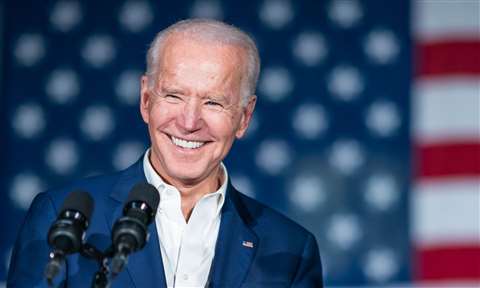9 key points from President Biden’s US$1 trillion infrastructure bill
09 November 2021
Following the approval of US president Joe Biden’s US$1 trillion infrastructure bill, the proposal is now just awaiting his signature to become legislation. We take a look at the key areas where investment opportunities lie…
 President Biden said he would deliver a “once in a generation investment” in the country’s infrastructure.
President Biden said he would deliver a “once in a generation investment” in the country’s infrastructure.
This will include:
Transforming the nation’s crumbling transportation infrastructure
This will include roads and bridges, rail, aviation, ports, and inland waterways – making the movement of goods and people faster, cheaper, cleaner, and manufactured in the US, while preserving and growing the union workforce, according to Biden.
The plan also vows to transform the energy sources that power the transportation sector, making it easier for mobility to be powered by electricity and clean fuels, including commuter trains, school and transit buses, ferries, and passenger vehicles.
Sparking a “second great railroad revolution”
Biden says he will make sure that the US has the cleanest, safest, and fastest rail system in the world – for both passengers and freight.
His rail revolution aims to reduce pollution, connect workers to good union jobs, slash commute times, and spur investment in communities that will now be better linked to major metropolitan areas.
To do this, Biden will tap existing federal grant and loan programs at the US Department of Transportation, and improve and streamline the loan process. In addition, Biden will work with Amtrak and private freight rail companies to further electrify the rail system, reducing diesel fuel emissions.
Upgrading municipal transit networks
Currently, much of the US does not have access to high-quality and zero-emissions options for affordable, reliable public transportation; and where transit exists, it’s often in need of repair.
Biden aims to provide all municipalities of more than 100,000 people with quality public transportation by 2030. He will allocate flexible federal investments with strong labour protections to help cities and towns install light rail networks and improve existing transit and bus lines.
The plan also claims it will help them invest in infrastructure for pedestrians, cyclists, and riders of e-scooters and other micro-mobility vehicles and integrate technologies like machine-learning optimized traffic lights.
Furthermore, Biden will work to make sure that new, fast-growing areas are designed and built with clean and resilient public transit in mind. Specifically, he will create a new program that gives rapidly expanding communities the resources to build in public transit options from the start.
Build a national network of electric vehicle (EV) chargers along highways and in rural and disadvantaged communities
Claiming to be the largest investment in EV infrastructure in history, the Bipartisan Infrastructure Framework will accomplish the President’s goal of building 500,000 EV chargers.
The launch of a new, dedicated Financing Authority
The new organisation will aim to leverage billions of dollars into clean transportation and clean energy, according to the administration.
Ensuring clean, safe drinking water is a right in all communities
This will see investment in the repair of water pipelines and sewer systems, replacement of lead service pipes, upgrade of treatment plants, and integration of efficiency and water quality monitoring technologies.
This includes protecting watersheds and clean water infrastructure from man-made and natural disasters by conserving and restoring wetlands and developing green infrastructure and natural solutions.
Expanding broadband, or wireless broadband via 5G
As the Covid-19 crisis has revealed, citizens everywhere require universal, reliable, affordable, and high-speed internet to do their jobs, participate equally in remote school learning and stay connected. This digital divide needs to be closed everywhere, from lower-income urban schools to rural America, to many older Americans as well as those living on tribal lands. Just like rural electrification several generations ago, universal broadband is long overdue and critical to broadly shared economic success.
Cleaning up and redeveloping Brownfield sites and other community assets
This will include abandoned and underused Brownfield properties, old power plants and industrial facilities, landfills and abandoned mines that will be transformed into new economic hubs for communities all across America.
Upgrade of power infrastructure
This will be done including by building thousands of miles of new, resilient transmission lines to facilitate the expansion of renewable energy, including through a new Grid Authority. The Plan is being touted as the single largest investment in clean energy transmission in US history.
STAY CONNECTED



Receive the information you need when you need it through our world-leading magazines, newsletters and daily briefings.
CONNECT WITH THE TEAM







